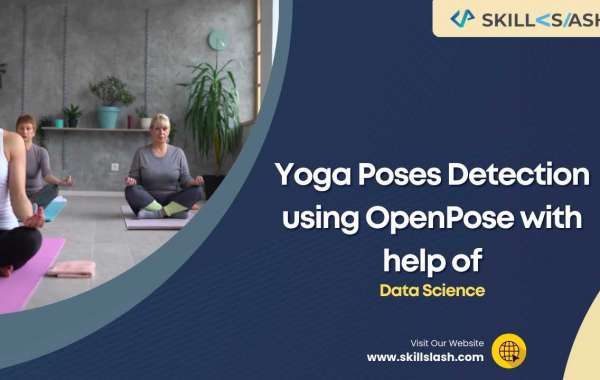Introduction:
Yoga is a physical, mental, and spiritual practice that originated in ancient India. It has been gaining popularity around the world, as people become more interested in taking care of their physical and mental health. Yoga has been known to have numerous benefits, such as improving flexibility, reducing stress, and strengthening muscles. However, one challenge that many yoga practitioners face is ensuring that they are performing the poses correctly. In this blog, we will explore how OpenPose, a computer vision library, can be used with the help of Data Science to detect yoga poses accurately.
What is OpenPose?
OpenPose is an open-source computer vision library that can detect and track human body parts. It uses deep learning techniques to analyze images and videos, identifying the location of different body parts such as hands, feet, and head. This information can then be used to recognize and track the movement of humans in real-time.
Using Data Science to Train OpenPose:
To use OpenPose for yoga pose detection, we first need to train the model to recognize specific yoga poses. This involves collecting a large dataset of images and videos of people performing yoga poses, labeling the different body parts, and training the model to recognize the poses.
The dataset used for training must be diverse, including people of different ages, genders, and body types performing the poses from different angles. The more diverse the dataset, the more accurate the model will be at detecting the poses. This is where Data Science comes into play. Data scientists can use techniques such as data augmentation to create new data points from existing data, making the dataset more diverse and increasing the accuracy of the model.
Once the dataset is ready, Data Scientists can use deep learning techniques such as convolutional neural networks (CNNs) to train the model. CNNs are particularly useful for image recognition tasks, as they can identify patterns and features in the images that are difficult for humans to detect. The model can then be fine-tuned to detect specific yoga poses by labeling the poses in the training data and adjusting the model's parameters to optimize its accuracy.
Detecting Yoga Poses with OpenPose:
Once the model is trained, it can be used to detect yoga poses in real-time. OpenPose can analyze images and videos, identifying the location of different body parts and using this information to detect yoga poses accurately. The detected poses can then be displayed on a screen or saved for analysis later.
One of the benefits of using OpenPose for yoga pose detection is its ability to recognize poses in real-time, making it an excellent tool for yoga instructors who want to monitor their students' performance. It can also be used to track progress over time, comparing the accuracy of poses from one session to the next.
Conclusion:
In conclusion, OpenPose, with the help of Data Science, can be used to detect yoga poses accurately. By training the model with a diverse dataset and using deep learning techniques such as CNNs, we can teach the model to recognize specific yoga poses. This can be beneficial for yoga instructors who want to monitor their students' performance and track progress over time. As technology continues to advance, we can expect to see more applications of computer vision in the field of yoga and other physical activities.
Join Us:
Data science course in Bangalore
Data science course in Hyderabad
Data analytics course in Hyderabad
Full stack developer course in Mumbai
Full stack developer course in Hyderabad




